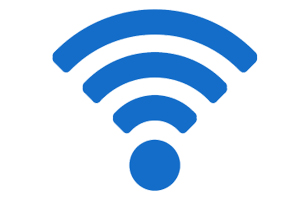Smartphone users exist within a connectivity landscape filled with cellular and Wi-Fi signals. As they navigate this landscape the quality of their smartphone connection varies dramatically. Most people spend around 90% of their time indoors, an environment where cellular networks frequently struggle to deliver optimum performance and where, very often, Wi-Fi is available in abundance.
Indeed, it has become an industry truism that the great majority of smartphone data is consumed over Wi-Fi networks; in people’s homes, in their offices, and in the public spaces where they convene in large numbers.
But quality of connection is only one measure of a user’s overall connectivity experience. Wi-Fi may often deliver the superior connection indoors but it lacks the refinement offered by cellular. With Wi-Fi, users have to locate a network, identify the correct SSID, manually request access, navigate whatever portals are inserted into the access process, and deal with whatever quality variations they encounter once they are finally connected. On the cellular network all of these processes are automated, and the experience is managed in real time to ensure the device moves between 2G, 3G and LTE according to whichever is best in the moment.
So on the one hand we have an abundant connectivity resource in Wi-Fi that delivers access where the cellular network struggles, and on the other we have an experience honed over decades that represents the smartphone connectivity ideal.
To integrate the two to the benefit of the end user requires that the indoor coverage of Wi-Fi is assimilated into the smartphone experience in such a way that none of the sophistication of the cellular experience is sacrificed.
Users need Wi-Fi in as many indoor locations as possible. Access to Wi-Fi must be automated so the user’s intervention is not required. The performance of the Wi-Fi connection must be understood so the user only connects to high quality networks, and is moved automatically if that quality should drop.
The reality is that most users simply have neither the inclination nor the understanding to best manage these processes, meaning much of their connectivity is a gamble that doesn’t always pay off.
Frustrated by this reality many end users take binary decisions. Our studies have shown that more than 50% of users keep Wi-Fi switched off in public, for example, to preserve battery life or prevent the device clinging to a Wi-Fi location that offers no onward connection. But by applying a little automated intelligence to the management of the Wi-Fi radio it can be activated only when there is a good chance of a good connection; improving both power consumption and connectivity experience.
This is just one example that shows how the process of refinement which has long been applied to cellular can be extended to Wi-Fi, creating a Connectivity Landscape that is marked by ease of movement, and not endless barriers and checkpoints.
Mobile operators need to make this happen. Unless a smartphone’s entire connectivity is managed for optimum performance, any service that depends on Wi-Fi — such as Wi-Fi calling — will by definition perform sub-optimally.
 If users are left to manage such an important element of their own connectivity as Wi-Fi, two outcomes get increasingly likely: Either the value they place on service provision will go down, or some other player will intervene to improve the experience.
If users are left to manage such an important element of their own connectivity as Wi-Fi, two outcomes get increasingly likely: Either the value they place on service provision will go down, or some other player will intervene to improve the experience.
The use of Wi-Fi to enhance indoor coverage can dramatically improve the mobile operator’s service and influence. Likewise, the cellular connectivity fundamentals of quality, simplicity and security can dramatically improve the Wi-Fi experience.
By accepting this and acting upon it, mobile operators can enable true freedom of movement within the Connectivity Landscape.
Dave Fraser, CEO, Devicescape






